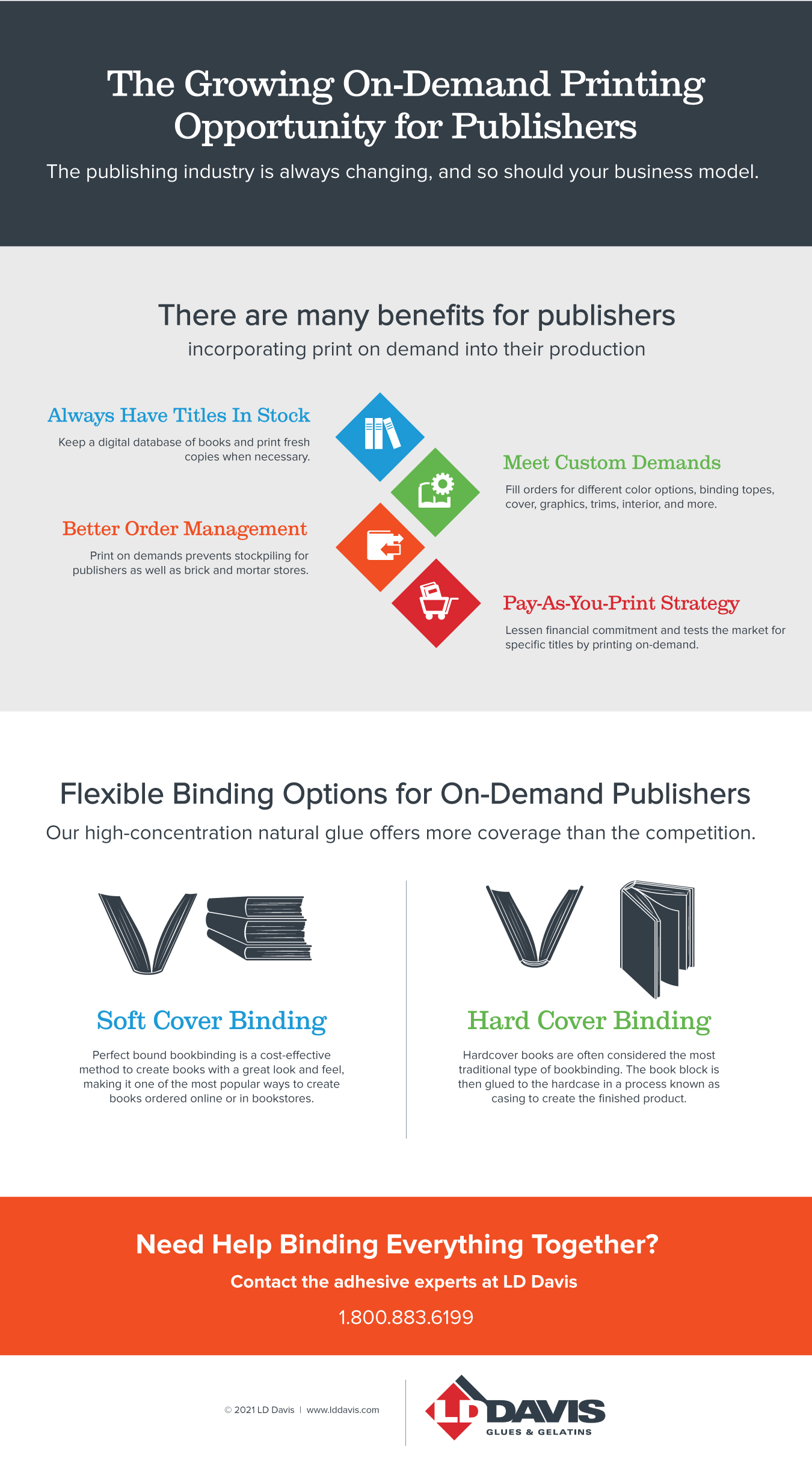The printing industry has gone through many changes in the past few decades. With the rise of digital media, publishers have changed the way they do business. While ebooks and audiobooks are popular, books are not going away, and readers across the U.S still desire them.
Print on demand is modifying the way the publishing industry does business. Instead of having a ton of inventory, this process creates a book when an order is received. Many publishers of all sizes, including independent, academic, and commercial presses, use the benefits of on-demand printing to delight readers while reducing their financial risk.
There are many benefits for publishers incorporating print on demand into their production.
Titles Are Always in Stock
Ever felt the disappointment of going through a bookstore or online, only to find out the book is out of print? Make running out of stock a thing of the past. With print on demand, publishers can keep books in a digital database and print fresh copies when necessary. Any book a customer wants can be made in a short amount of time.
It’s possible to print just one copy or thousands of copies of a particular book depending on demand. Not only is this great for large publishers, but independent ones as well. You don’t have to determine how much to invest in an initial print run and simply print as needed.
Creates a Variety of High-Quality Books
Print on demand has come a long way since. There are many options publishers have at their fingertips when creating books, color options, binding types, covers, graphics, text, trim sizes, and color interiors.
For publishers, printing on demand provides one of the most economical ways to create and distribute their books. It also allows publishers to test the market for a book without investing heavily in an initial print run. No more keeping boxes of books in your basement or taking up shelf space in inventory.
Concise Order Management
As previously mentioned, printing on demand allows publishers to create books at any given time. So, if one customer wants a book or a distributor needs 1,000 copies, print on demand makes it easier to fulfill that need. With print on demand, the book is printed and shipped directly to its end destination right from the print facility once ordered.
Print on demand also provides flexibility with book distribution. A book can be formatted for multiple platforms to be sold through the author’s website, other online retailers, and on the shelves of local bookstores.
Books are Printed When Ordered
No more printing first, then figuring out how to sell books later. In the past, many independent publishers would have stacks of unsold books in the basement or need to rent a warehouse to store copies. Print on demands prevents stockpiling for publishers as well as brick and mortar stores. With print on demand, there’s less overhead to account for, meaning less financial risk.
Print on demand allows publishers to develop a pay-as-you-go strategy, which lessens financial commitment and tests the market for specific titles. Publishers of all sizes can use print on demand to see how popular a new author or genre is. It is also possible to test a book’s format by making it available in paperback or hardcover to give customers more options.
Popular Types of On-Demand Book Binding
There’s more than one way to bind a book. In the world of printing on demand, speed and quality are some of the top factors to consider. Below are the most popular bindings for printing on demand.
Soft Cover
.jpg?width=1000&name=LD%20Davis%20PUR%20Book%20Binding%20Method%20(1).jpg)
Perfect Binding
Perfect binding is the top choice for most paperback books. During this process, the pages and cover of the book are glued together at the spine using a perfect binding machine to create a strong, flexible hold. Usually, hot melt or PUR glue is used to adhere all the elements together.
Perfect bound bookbinding is a cost-effective method to create books with a great look and feel, making it one of the most popular ways to create books ordered online or in bookstores.
Hard Cover
.jpg?width=1000&name=LD%20Davis%20Hard%20Cover%20Book%20Binding%20Method%20(1).jpg)
Adhesive Case
Hardcover books are often considered the most traditional type of bookbinding. When making a hardcover book, the pages are sewn or glued together into a book block. A strip of cloth is added to the spine where the book block will adhere to the case. The book block is then glued to the hardcase in a process known as casing to create the finished product.
Depending on the audience, one kind of binding may be more popular than the other. Printing on demand allows publishers to see which type of binding is more popular, or provide their audience with different types of binding to suit their needs.
Binding Everything Together

Publishers are often looking for cost-effective ways to keep their production going. Printing on demand allows for flexibility so that publishers can meet customer demands. At LD Davis, we work with a variety of publishers to provide them with the adhesives needed to bind everything together. Whether you require high-quality PUR Glue for perfect binding or natural glue to create hardcover books, we can provide an effective solution to help publishers make long-lasting books to delight customers.

.jpg)





